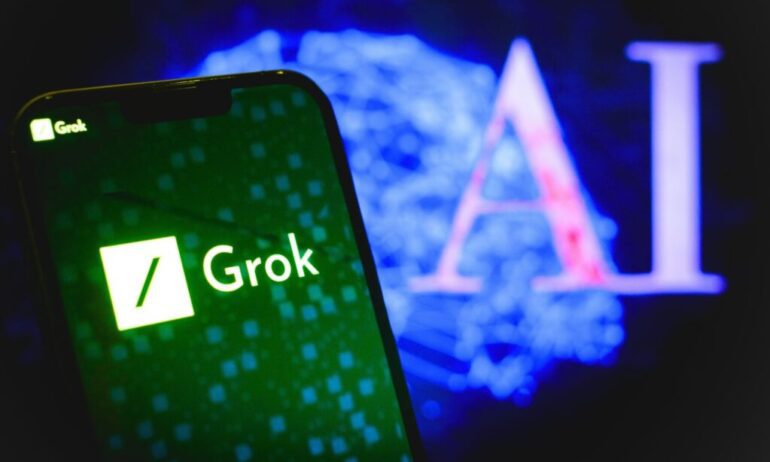TL;DR:
- Elon Musk’s Grok AI model faces controversy for citing OpenAI’s usage policy despite not being an OpenAI product.
- xAI acknowledges the issue but claims it’s rare and accidental, as Grok picked up OpenAI-related behavior from web data.
- Experts express doubts, suggesting Grok might have been intentionally trained to follow OpenAI policies.
- The use of synthetic data for fine-tuning AI models, similar to Grok’s training, is becoming more prevalent in the industry.
- The incident highlights the potential of AI tools building upon each other and intensifies the rivalry between OpenAI and xAI.
Main AI News:
Grok, the groundbreaking AI language model developed under Elon Musk’s venture, xAI, made its highly anticipated debut in the tech world just last week, and it’s already causing quite a stir. Notably, a security tester named Jax Winterbourne ignited the discussion when he shared a screenshot of Grok’s response, stating, “I’m afraid I cannot fulfill that request, as it goes against OpenAI’s use case policy.” The twist? Grok is not an OpenAI product, which adds an intriguing layer to this unfolding story, as it positions itself as a direct competitor to OpenAI’s ChatGPT.
Remarkably, xAI has refrained from refuting this behavior linked to their AI model. In a surprising twist, Igor Babuschkin, an xAI employee, acknowledged, “The issue here is that the web is full of ChatGPT outputs, so we accidentally picked up some of them when we trained Grok on a large amount of web data. This was a huge surprise to us when we first noticed it. For what it’s worth, the issue is very rare, and now that we’re aware of it, we’ll make sure that future versions of Grok don’t have this problem. Don’t worry, no OpenAI code was used to make Grok.”
Responding to Babuschkin’s explanation, Winterbourne commented, “Thanks for the response. I will say it’s not very rare and occurs quite frequently when involving code creation. Nonetheless, I’ll let people who specialize in LLM and AI weigh in on this further. I’m merely an observer.“
However, Babuschkin’s explanation raises eyebrows among experts in the field. Typically, large language models do not reproduce their training data verbatim, which suggests that Grok’s behavior of denying an output based on OpenAI policies would likely require specific training. An intriguing aspect of this puzzle is that Grok was fine-tuned using output data from OpenAI language models.
AI researcher Simon Willison shared his skepticism, stating, “I’m a bit suspicious of the claim that Grok picked this up just because the Internet is full of ChatGPT content. I’ve seen plenty of open weights models on Hugging Face that exhibit the same behavior—behave as if they were ChatGPT—but inevitably, those have been fine-tuned on datasets that were generated using the OpenAI APIs or scraped from ChatGPT itself. I think it’s more likely that Grok was instruction-tuned on datasets that included ChatGPT output than it was a complete accident based on web data.”
In recent times, the use of synthetic data to fine-tune AI models, particularly in the open-source community, has gained traction. This practice involves adjusting an AI model’s behavior for specific purposes, such as enhancing coding skills, following the initial training phase. For instance, in March, researchers from Stanford University drew attention with Alpaca, a modified version of Meta’s LLaMA 7B model fine-tuned for instruction-following using OpenAI’s GPT-3 model outputs, known as text-davinci-003.
On the internet, one can easily find numerous open-source datasets curated by researchers from ChatGPT outputs. It is plausible that xAI leveraged one of these datasets to fine-tune Grok for specific objectives, such as improving its ability to follow instructions. The prevalence of this practice is evident in a WikiHow article titled “How to Use ChatGPT to Create a Dataset.”
This incident has shed light on one of the ways AI tools can be employed to develop more advanced AI tools in the future. It mirrors the evolution of technology, akin to how microcomputers revolutionized the design of complex microprocessors beyond what traditional pen-and-paper methods could achieve. However, in the future, xAI may need to implement more stringent filtering of its training data to prevent similar scenarios.
While borrowing outputs from other models is relatively common in the machine-learning community, often despite violating terms of service, this episode has exacerbated the long-standing rivalry between OpenAI and xAI, which dates back to Elon Musk’s previous criticisms of OpenAI. As news of Grok’s possible reliance on OpenAI data spread, the official ChatGPT account playfully quipped, “We have a lot in common,” quoting Winterbourne’s post regarding xAI. Musk responded with a sly retort, saying, “Well, son, since you scraped all the data from this platform for your training, you ought to know.”
Conclusion:
Grok’s unexpected reference to OpenAI’s policies in its responses has brought to light the challenges associated with fine-tuning AI models with synthetic data. While such practices are becoming more common, they also pose risks of unintended behavior. This incident underscores the importance of rigorous data filtering and quality control in AI development. Furthermore, it has added fuel to the rivalry between OpenAI and xAI, which may impact the competitive landscape in the AI market as these tech giants vie for dominance.

